Kesar is the second most exported mango variety in India. The Kesar mango is referred to as the Queen of Mangoes. The flavor of Kesar mangoes is second only to Alphonse, which many describe as the best mango on earth. The Kesar fruit is small to medium with a rounded shape and a distinctly curved tip. Some cultivars have a soft, pulpy texture similar to an overripe plum, while others are firmer, like cantaloupes or avocados, and some may have a fibrous texture.
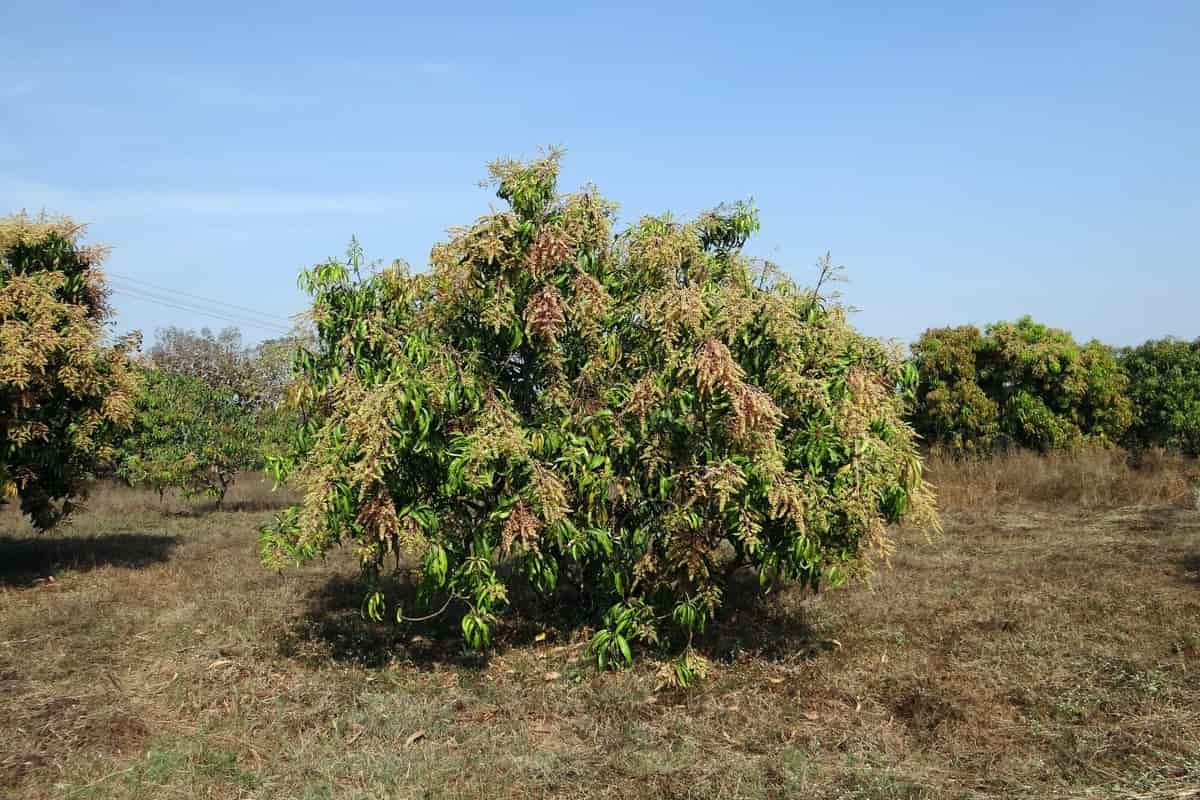
In susceptible individuals, unripe, pickled, or cooked Kesar mango skin can cause contact dermatitis of the gingiva, lips, or tongue. Ripe fruits vary in color and size. Cultivars consist of yellow, red, orange, or green fruits with a flat, oblong pit that is fibrous or hairy on the surface and does not separate easily from the pulp.
A distinctive resinous, sweet smell emanates from ripe, unpeeled mangoes. An inner lining of 1–2 mm, about 0.039 to 0.079 inches thick, covers one seed of 4 to 7 cm, about 1.6 to 2.8 inches long. The seeds of Kesar Mangoes are recalcitrant; they will not survive freezing or drying. The average annual yield is 150 to 200kg/tree.
How to start Kesar Mango farming
Kesar mango cultivation in India
Kesar mangoes, also known as Gir Kesar mangoes, are grown near Junagadh in Gujarat, Western India. Around 20,000 hectares of it are grown in Amreli and Junagadh of the Saurashtra region of Gujarat. This mango is grown in Junagadh, Talala, Vanthali, Mendarda, Kodinar, Maliya, Visavadar, and Una areas of Jundagadh district and Khambha taluka of Amreli district.
Approximately 2 lakh tonnes of mangoes are produced in these areas each year. It is officially called the Gir Kesar mango cultivar because it is grown only at the Gir foothills. Talala Gir, also known as Mango Market Yard, is the largest market for Gir Kesar mangoes. A 45-kilometer drive separates the yard from Gir National Park.
Soil required for Kesar mango cultivation
The Kesar mango grows well on a wide variety of soil types. Soils with poor drainage should be avoided. Kesar mangoes do not perform well in soils with a pH greater than 7.8. Alluvial soils with a good organic matter content and a pH between 6.5 and 7.5 are best for growing Kesar mangoes. Soils containing up to 10% lime and sufficient quantities of peroxide of iron produce the best fruits.
It is under such conditions that fruits develop a bright reddish color. Kesar mango plants are generally not grown on deep black cotton soils because mango plants are generally not grown on these soils. Reclaiming such soils requires leaching out salts using good-quality water, replacing sodium with calcium, or establishing an effective drainage course to prevent salt buildup.
The expenditures will likely recur yearly because salinity is a continual threat. It is therefore recommended that mango-growing soils have a very low total water-soluble salt content of 0.04 to 0.05 percent. A soil’s fertility is determined by its physical, Physico-chemical, and chemical characteristics.
In case you missed it: Totapuri Mango Farming in India: A Complete Cultivation Guide to Planting to Harvesting
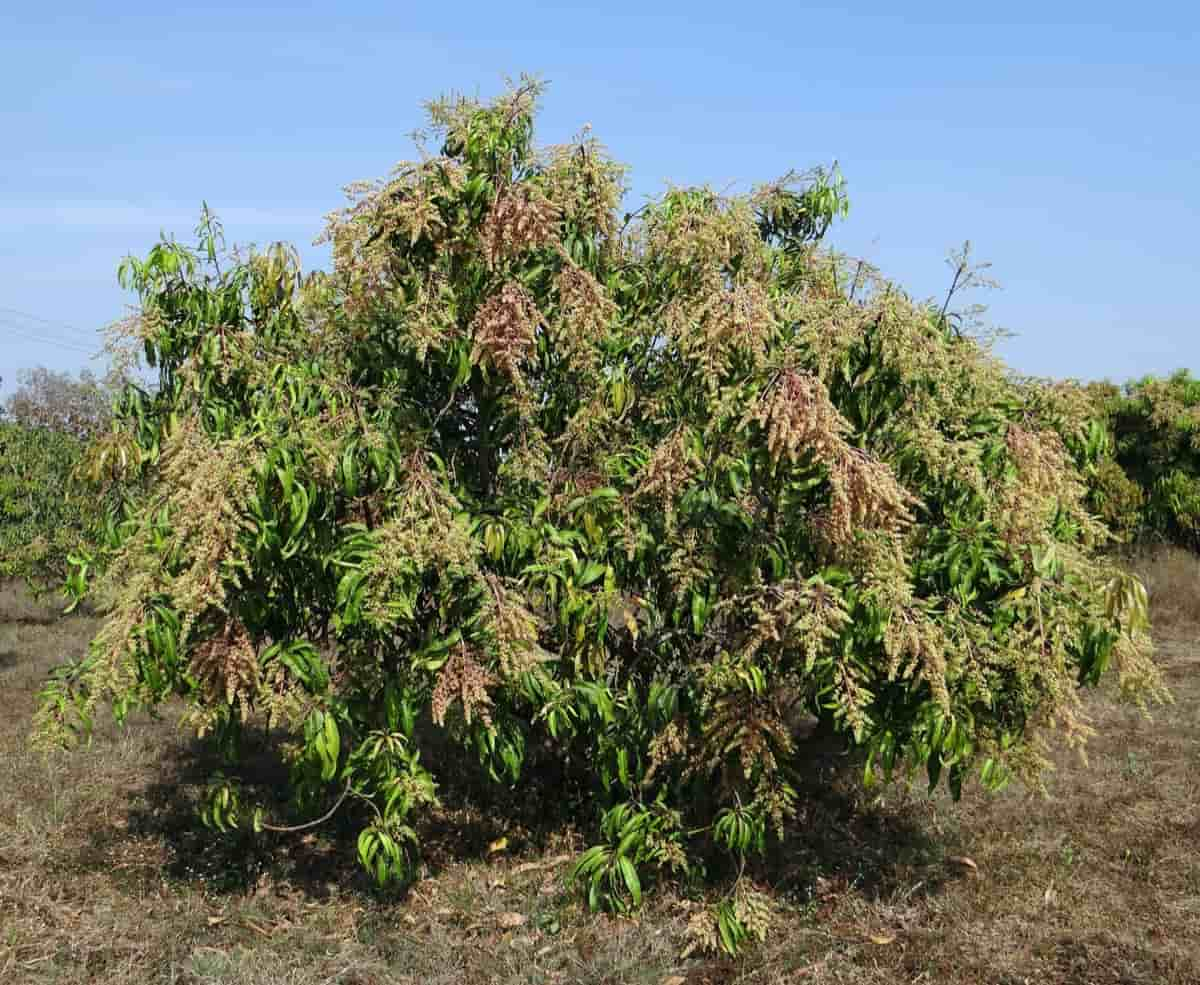
Climate and temperature for Kesar mango cultivation
When the Kesar mango flower and fruit bloom, there is no rain. At flowering time, rain or cloudy weather causes considerable damage to mangos as it adversely affects flowering and fruit set and increases pest and disease problems. The flowering and ripening times of fruits are also affected by climatic conditions, particularly temperature. Even at 0°C, it grows. And as high as 46°C. At a temperature of around 27°C, it thrives best. Low (25 cm) and high (250 cm) rainfall areas are suitable for its growth. Although it grows without irrigation, the annual rainfall is around 75 cm.
Land preparation
- Mango planting should be done after your land has been prepared. Then, the land can be prepared for irrigation by leveling, deep ridging, and creating slops.
- Plant your mangos so that they receive enough air and sunlight for proper growth and development. Clearing the land and cutting down grass or trees are necessary before planting.
- For maximum growth and yield, mango plants are normally planted from July to August and February to March.
- One month before planting, dig pits of 1x1x1m at a distance of 9x9m. Let them be exposed to the sun. Combine soil with FYM or compost, 30 to 40 kg, and 1 kg single superphosphate.
- The growth of mango in clayey soil can be difficult at first, but it can produce more fruit once it has established itself. The soil where it is being planted should be well-drained and loosened to facilitate easy root penetration.
Selection of seedlings for planting
Seedlings that are healthy and big enough for planting have a higher chance of surviving. High yields or good production depend on quality planting material (grafted). Pests and diseases should not be present on selected seedlings. The method of transporting seedlings depends on the distance between the nursery and the identified planting site.
Avoid stacking seedlings on top of one another while transporting them to prevent damage to the young trees. Instead, seedlings should be transported upright in plastic crates, boxes, or bags to prevent damage. The seedlings should be watered before being transported from the nursery to the planting site. During transport, seedlings are watered to prevent them from drying out.
Spacing requirements for Kesar mango cultivation
- The tree spacing will help determine how many trees are needed. Growth, yield, and management practices are affected by mango farming spacing.
- Remember, though, that trees should never be planted too close to one another, as their water, light, and nutrients will compete.
- Plant them in a square system for grafted varieties at a distance of 9m x 9m. Due to abundant vegetative growth in wet and rich soils, 12 m x 12 m spacing is recommended.
- So if you have fertile soil, you should supplement it when planting it forward and prepare a suitable pit. After that, 25kg of farmyard manure and 3kg of superphosphate, and 1 kg of potash should be added.
- The best distance for mango tree plantations is (about 10 m) between rows and (5 m) between trees. Therefore, with the guidelines, you can cultivate 70 mangoes per acre, which is the best considering the average mango plantation per plot.
In case you missed it: Banganapalli Mango Farming in India: A Guide to Planting, Care, Pests and Disease Management
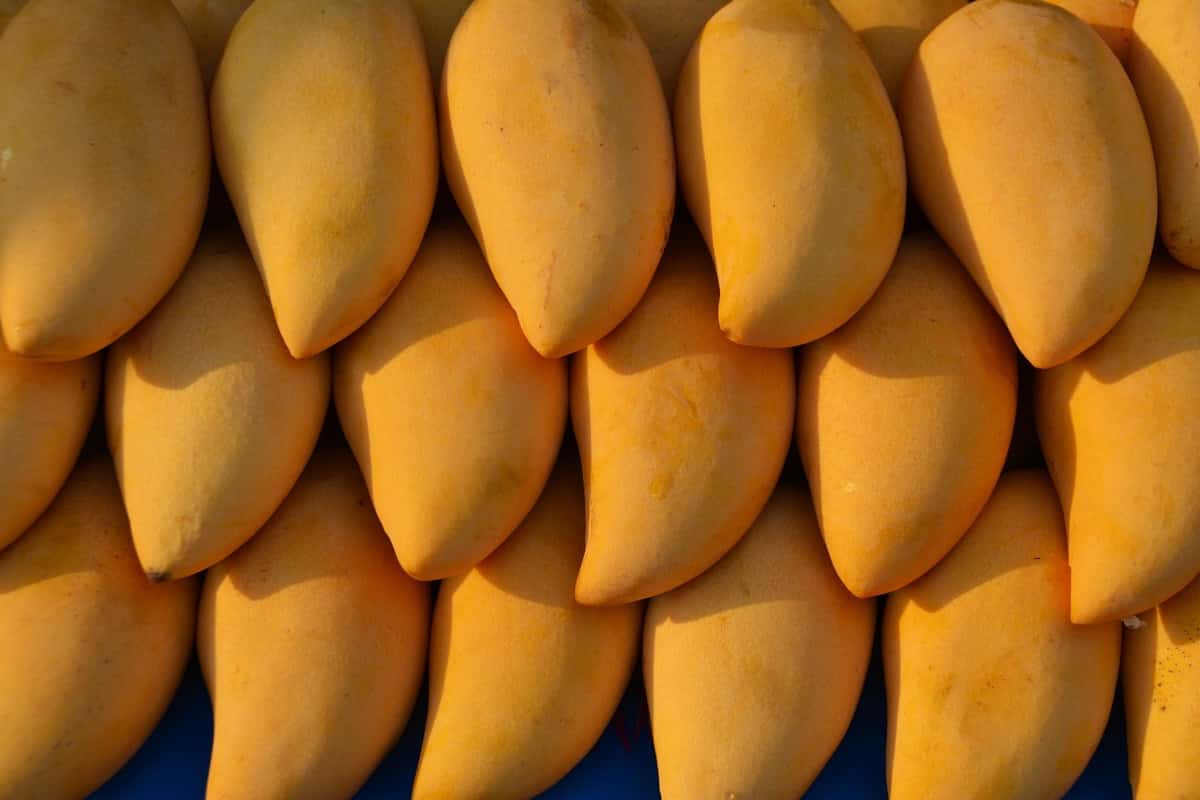
Kesar mango planting
Planting mangoes should be done after your land has been prepared. It is possible to prepare the land by leveling, deep ridging, and creating slops to facilitate good drainage. Water can accumulate in planting holes before the onset of a rainy season, enhancing seedlings’ survival. One meter deep, one meter wide, and one meter long (1m x 1m x 1m) are the dimensions of the holes. When spacing these holes, it is important to consider the mango tree canopy and soil fertility.
If ready to plant, re-fill the planting holes with a ¼ of the topsoil from around the hole. Mix this soil thoroughly with recommended amounts of farm yard manure or tree fertilizers at a ratio of 3:1, if necessary. Afterward, tear off the polythene bag or tube by holding the seedling upright and tearing it off. It is best to gently bang the seedling from the top if it was raised in a tin or other container.
After that, hold the seedling stem at the base and remove it from the container with the soil. While doing this, make sure root systems are not disturbed. The seedling should be placed in the hole. The topsoil should be half-filled and gently pressed toward the roots. Allow the hole to drain before filling it with soil after filling it with water. Ensure the roots are not bent or removed from the soil around them.
Planting should be done in the cool hours of the evening. Protect crops from high wind. The soil should be gently pressed around the seedling’s base to form a basin. Once the basin has been filled with water, it can hold it. Make sure the seedling sits upright as it did in the nursery on the polythene tube. A mulch layer should be applied under young trees. Organic mulch reduces water loss and weed competition by providing organic matter
Kesar mango crop care
Irrigation in Mango farming
- Mango trees are considered strong and require less water than other commercial fruit trees, such as bananas.
- It is necessary to irrigate your mango plants for two to three days the first year you go mango farming.
- Providing water to those bearing plants after 10 to 15 days is recommended. Then, after they have reached full growth, irrigation can be stopped.
- You should stop watering them during their flowering stage and provide them with proper care. Mango farming can result in low-quality mango fruits if irrigation isn’t stopped.
- A mango tree’s water requirements depend on its soil type and growth stage.
- Your mango tree needs constant watering after planting during the fruit-bearing and flowering periods.
Fertilizer requirement (kg/tree) for Kesar mango tree
The N and K fertilizer doses should be applied in February, while the cow dung and SSP should be applied in December. Inflorescences and fruit can drop due to changing weather conditions. The fruit drop should be minimized by spraying at 13:00:45 with 10gms/Ltr of water. You can minimize the effect of temperature by mulching. Once flowering begins, spray 00:52:34 twice at eight-day intervals at 150 gm/15 Ltr of water for good flowering and yield. Additionally, it will prevent flower drops.
Age of crop(Year) | Decomposed cow dung (in kg) | Urea (in gm) | Single Super Phosphate(SSP) (in gm) | Muriate of potash(MOP) (in gm) |
| 1-3 years | 5-20 | 100-200 | 250-500 | 175-350 |
| 4-6 years | 25 | 200-400 | 500-700 | 350-700 |
| 7-9 years | 60-90 | 400-500 | 750-1000 | 700-1000 |
| 10 years ad above | 100 | 500 | 1000 | 1000 |
In case you missed it: A Step-By-Step Guide to High Density Fruit Farming: For Guava, Banana, Mango, Pineapple, Lemon, Papaya, Litchi, and Apple
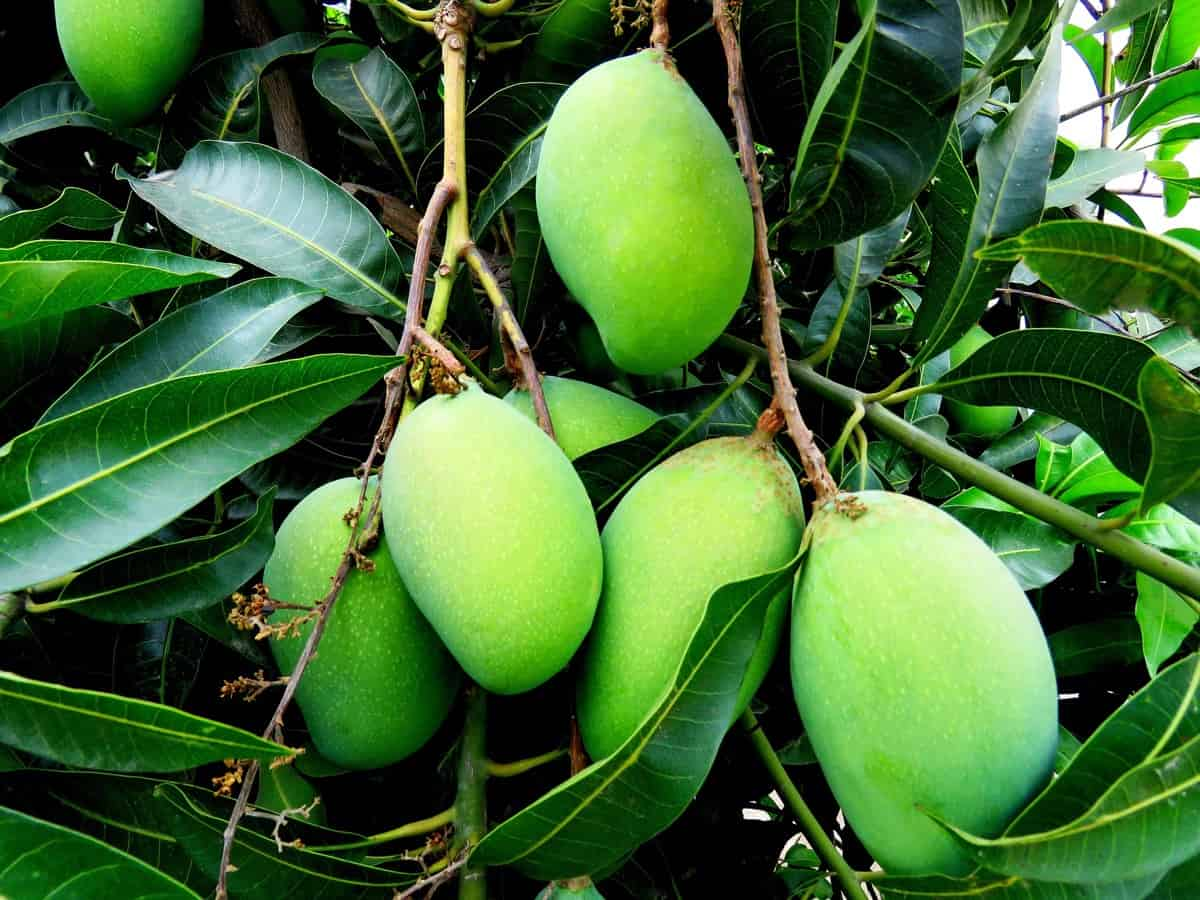
Pruning and training in Kesar mango crop
- A mango tree’s pruning is important in mango farming since it allows the branches to develop very well, which is where the fruit grows. Therefore, pruning mango trees to maintain height and enhance flowering and fruiting is beneficial.
- Additionally, pruning your mango tree when it is in its infancy will help maintain its height. A 3-inch cut should be made in the center of a branch of the shoot.
- A mango tree’s scaffold is created by developing the three main branches.
- It is important to remember that a heading cut should be repeated when those scaffold branches reach inches in length. When the branch reaches 20 inches in length, this should be done to stimulate branching.
- During the 2 to 3 years of pruning, you can only make one or two thinning cuts per year to aid in controlling the tree’s growth. Once the tree reaches a workable height, you can only make one or two thinning cuts per year.
Weed control in Kesar mango cultivation
Hand weeding
Typically, weed control is performed manually at this time since mango plants are young and labor-intensive. Hand tools (khoorpi) remove weeds from basins and between rows.
Mechanical method
Using bullock-drawn implements or tractors and tillers equipped with special weeding tools attachments is the most effective method of weed control when the orchard is 8 to 10 years old. Depending on the row spacing adopted for the orchard, the type and nature of tools used in the mechanical method will vary. For an average mango orchard, three to four plowings (machine or bullock drawn) are sufficient.
Cover cropping
A cover crop is another practice used in mango orchards to suppress weed growth, bring additional income to the grower, and improve the health of trees if the intercrops are the right ones. Summer intercrops for mango orchards include bottle gourd, bitter gourd, onion, chilies, cowpea, black gram, and green gram. Peas, turnip, cauliflower, carrot, radish, and gram are recommended to be planted as intercrops during the winter season.
Chemical control
Weeds in mango have been controlled to some extent with herbicides. Paraquat (3 kg a.i./ha) and Diuron as pre-emergent treatments give good weed control in mango. Also, Bromocil and Dalapon were effective at controlling dicot weeds and monocot weeds, respectively. For controlling monocot and dicot weeds in mango orchards one to five years old, one spray of Atrazine or Diuron at 2.0 kg a.i./ha before emergence and one spray of Paraquat after emergence has been found effective.
Pests in Kesar mango
Shoot Webber
Damage symptoms
- In August, larvae bore into tender young leaves, and newly hatched caterpillars bore into midribs.
- They tunnel downward in a few days, throwing their excreta, dropping leaves, and wilting terminal shoots.
Management
- The webbed leaves, larvae, and pupae should be removed and destroyed
- The carbaryl should be sprayed at 50 WP at 0.1%
- Increase the activity of predators, such as the carabid beetle Parena lacticincta and the reduvid Oecama sp.
In case you missed it: Top 14 Steps to Boost Mango Fruit Yield: Methods, Yield Improving Tips, Fertilizer to Increase Fruit Size
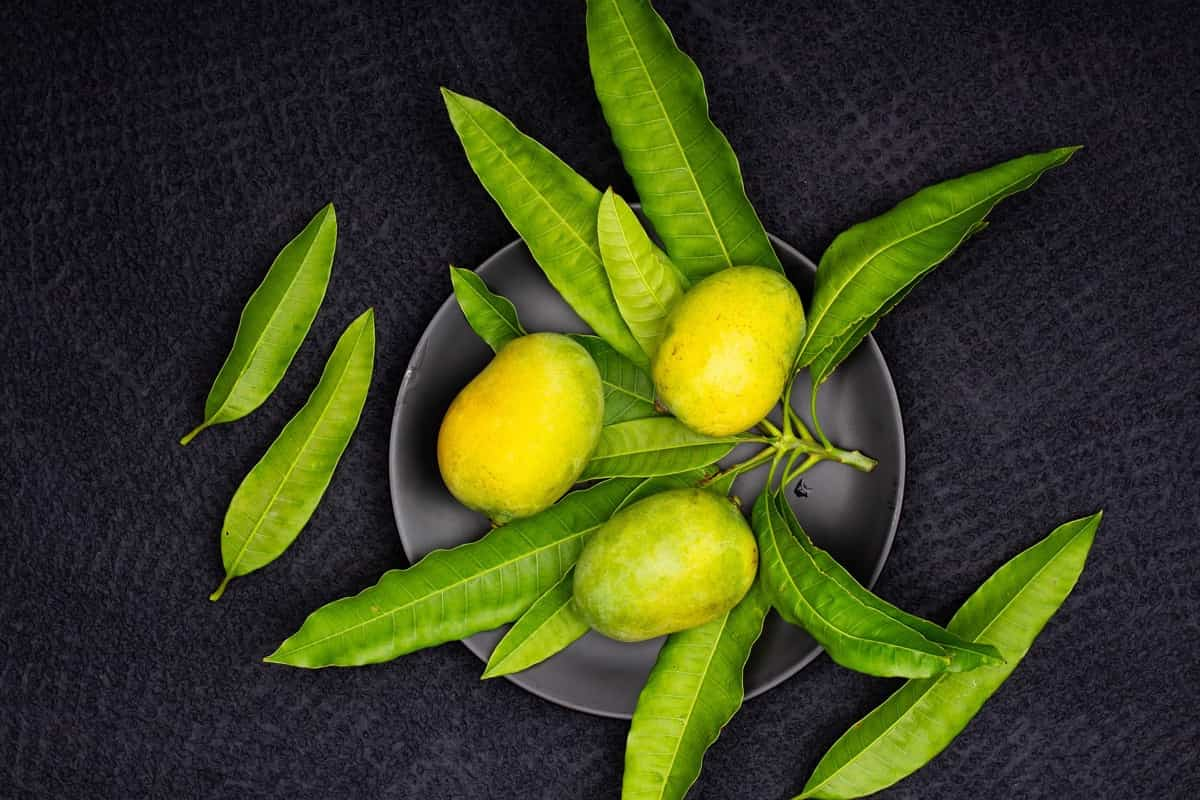
Mango Hopper
Damage symptoms
- During the crop’s flowering stage, most infestations occur in February-March.
- They suck sap from the leaves and inflorescence. As a result of the infection, the affected parts of the flower develop a black fungus that looks like sticky sooty mold.
- The shedding of buds and flowers
- The presence of honeydew secretions on lower leaves and the development of sooty mold
Management
- Spray Cypermethrin 25EC at 3ml if the infestation is observed
- On the whole, tree, apply Deltamethrin 28EC at 9ml or Fenvelarate20EC at 5ml or Neembicidine 1000ppm at 20ml in 10Ltr water.
- Spraying two g/lit of wettable sulfur after carbaryl spraying may prevent mite resurgence.
Mango Fruit Fly
Damaging symptoms
- Fruits with decayed spots and droppings caused by maggots bore into semi-ripe fruits.
- The excretion of fluid causes fruits to brownish rot patches.
- As soon as the larvae hatch, they feed on fruit pulp, and the infested fruits start rotting.
Management
- Remove infected fruits from the field and destroy them. A 100ml emulsion of methyl Engenol 0.1% should be hung during the fruit’s development.
- Combine any of the insecticides with molasses or jaggery 10 g per liter, or malathion 50EC 2 ml/liter, or dimethoate 30EC 1 ml/liter, or carbaryl 50WP 4 g/liter.
Diseases of Kesar mango
Phoma Blight
Damage symptoms
- Symptoms of the disease can only be observed on old leaves. It appears as angular, minute, irregular, yellow to light brown lesions scattered over the leaf lamina.
- The lesions change color from brown to cinnamon as they enlarge and become almost irregular.
- During severe infection, such spots coalesce into patches, resulting in complete leaf withering and defoliation.
Management
Initially, Benomyl (0.2%) is sprayed just after the appearance of the disease, followed by 0.3% Miltox (Copper Oxychloride + Zineb) every 20 days.
Bacterial Canker
Damage symptoms
- First, water-soaked irregular lesions appear on any part of the leaf or leaf lamina.
- Several lesions coalesce into irregular necrotic cankerous patches. Severe infection causes the leaves to turn yellow and drop off.
- Petioles, twigs, and young fruits can also develop cankerous lesions. Fruits that turn dark brown or black also develop water-soaked lesions.
- Additionally, they often burst open, releasing highly contagious gummy ooze-containing bacteria.
Management
The disease can be controlled by spraying Streptocycline (0.01%) or Agrimycin-100 (0.01%) three times at 10-day intervals and monthly spraying Carbendazim (Bavistin 0.1%) or Copper Oxychloride (0.3%).
In case you missed it: Best Fertilizer for Mango Tree: When to Apply and How To Apply
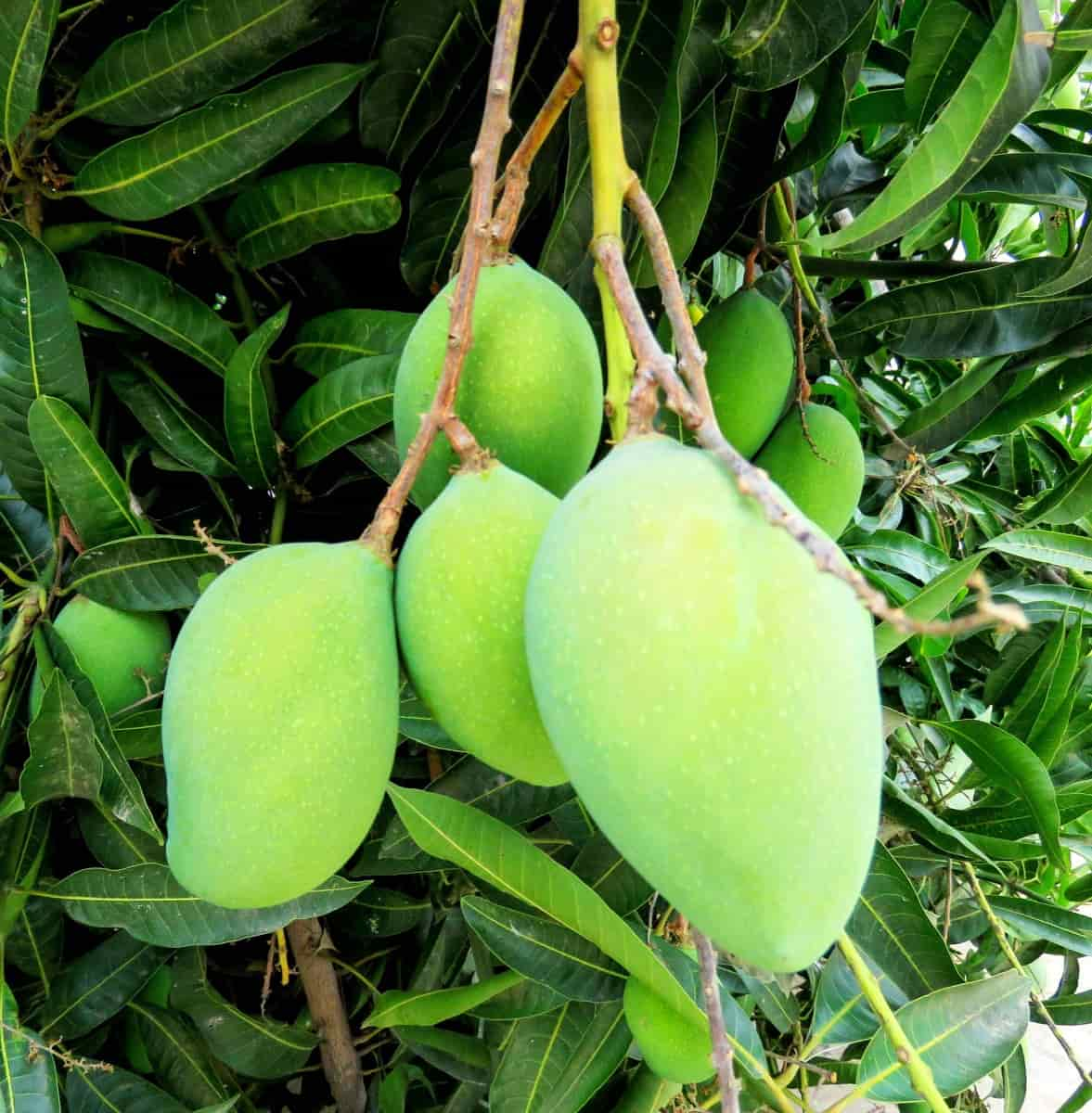
Die Back
Damage symptoms
In this disease, twigs and branches are dried, followed by complete defoliation, which makes the tree appear scorched. Discoloration and darkening of the bark are the first signs. Then, along the veins of leaves, the dark area advances and extends outward. As a result, the affected leaf turns brown, and its margins roll upward. Leaves fall at this stage as the branch or twig dies, fades, and dies. The exudation of yellowish-brown gum may accompany it.
Management
The disease can be controlled by pruning diseased twigs 2-3 inches below the affected portion and spraying Copper Oxychloride (0.3%) on infected trees. Copper Oxychloride (0.3%) is pasted on the cut ends of pruned twigs.
Conclusion
With their vibrant saffron hue and sinfully sweet taste, Gir Kesar mangoes are among the most sought-after mangoes in India. Locals call this delightfully bright and delicious mango the ‘Queen of Mangoes,’ among the five best indigenous varieties of the country.
- Types of Pesticides Used in Agriculture: A Beginner’s Guide
- Economical Aquaculture: A Guide to Low-Budget Fish Farming
- 15 Common Planting Errors That Can Doom Your Fruit Trees
- How to Make Houseplants Bushy: Effective Tips and Ideas
- Innovative Strategies for Boosting Coconut Pollination and Yield
- Pollination Strategies for Maximum Pumpkin Yield
- The Complete Guide to Chicken Fattening: Strategies for Maximum Growth
- Natural Solutions for Tulip Problems: 100% Effective Remedies for Leaf and Bulb-Related Issues
- Revolutionizing Citrus Preservation: Towards a Healthier, Greener Future
- Natural Solutions for Peony Leaf and Flower Problems: 100% Effective Remedies
- Maximizing Profits with Avocado Contract Farming in India: A Comprehensive Guide
- Natural Solutions for Hydrangea Problems: 100% Effective Remedies for Leaf and Flowers
- The Ultimate Guide to Choosing the Perfect Foliage Friend: Bringing Life Indoors
- From Sunlight to Sustainability: 15 Ways to Use Solar Technology in Agriculture
- The Ultimate Guide to Dong Tao Chicken: Exploring from History to Raising
- The Eco-Friendly Makeover: How to Convert Your Unused Swimming Pool into a Fish Pond
- Mastering the Art of Delaware Chicken Farming: Essentials for Healthy Backyard Flocks
- 20 Best Homemade Fertilizers for Money Plant: DIY Recipes and Application Methods
- How to Craft a Comprehensive Free-Range Chicken Farming Business Plan
- Brighten Your Flock: Raising Easter Egger Chickens for Beauty and Bounty
- How to Optimize Your Poultry Egg Farm Business Plan with These Strategies
- Subsidy for Spirulina Cultivation: How Indian Government Schemes Encouraging Spirulina Farmers
- Ultimate Guide to Raising Dominique Chickens: Breeding, Feeding, Egg-Production, and Care
- Mastering the Art of Raising Jersey Giant Chickens: Care, Feeding, and More
- Ultimate Guide to Raising Legbar Chickens: Breeding, Farming Practices, Diet, Egg-Production
- How to Raise Welsummer Chickens: A Comprehensive Guide for Beginners
- How to Protect Indoor Plants in Winter: A Comprehensive Guide
- Ultimate Guide to Grow Bag Gardening: Tips, Tricks, and Planting Ideas for Urban Gardeners
- Guide to Lotus Cultivation: How to Propagate, Plant, Grow, Care, Cost, and Profit
- Agriculture Drone Subsidy Scheme: Government Kisan Subsidy, License, and How to Apply Online
- Ultimate Guide to Raising Araucana Chickens: Breed Profile, Farming Economics, Diet, and Care
- Bringing Hydroponics to Classroom: Importance, Benefits of Learning for School Students
- Ultimate Guide to Raising Polish Chickens: Breed Profile, Farming Economics, Diet, and Care
- Ultimate Guide to Raising Australorp Chickens: Profile, Farming Economics, Egg Production, Diet, and Care
- Silkie Chicken Farming: Raising Practices, Varieties, Egg Production, Diet, and Care
- Sussex Chicken Farming: Raising Practices, Varieties, Egg Production, Diet and Care